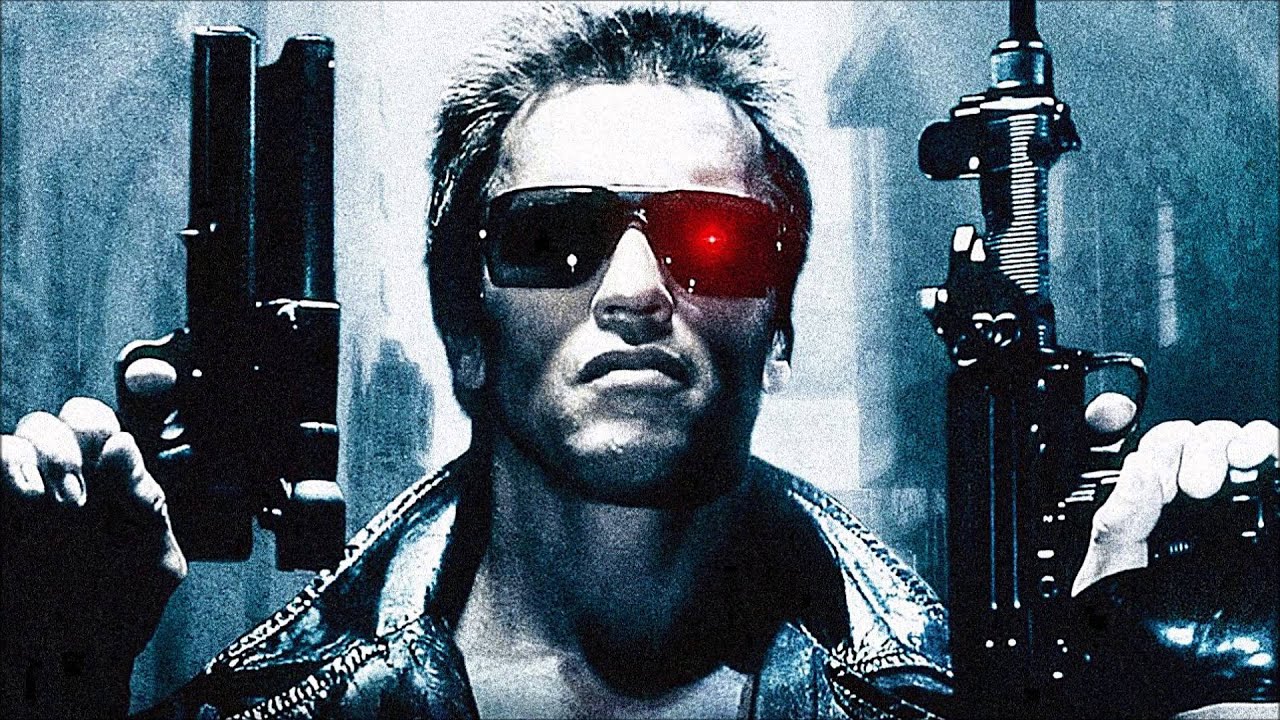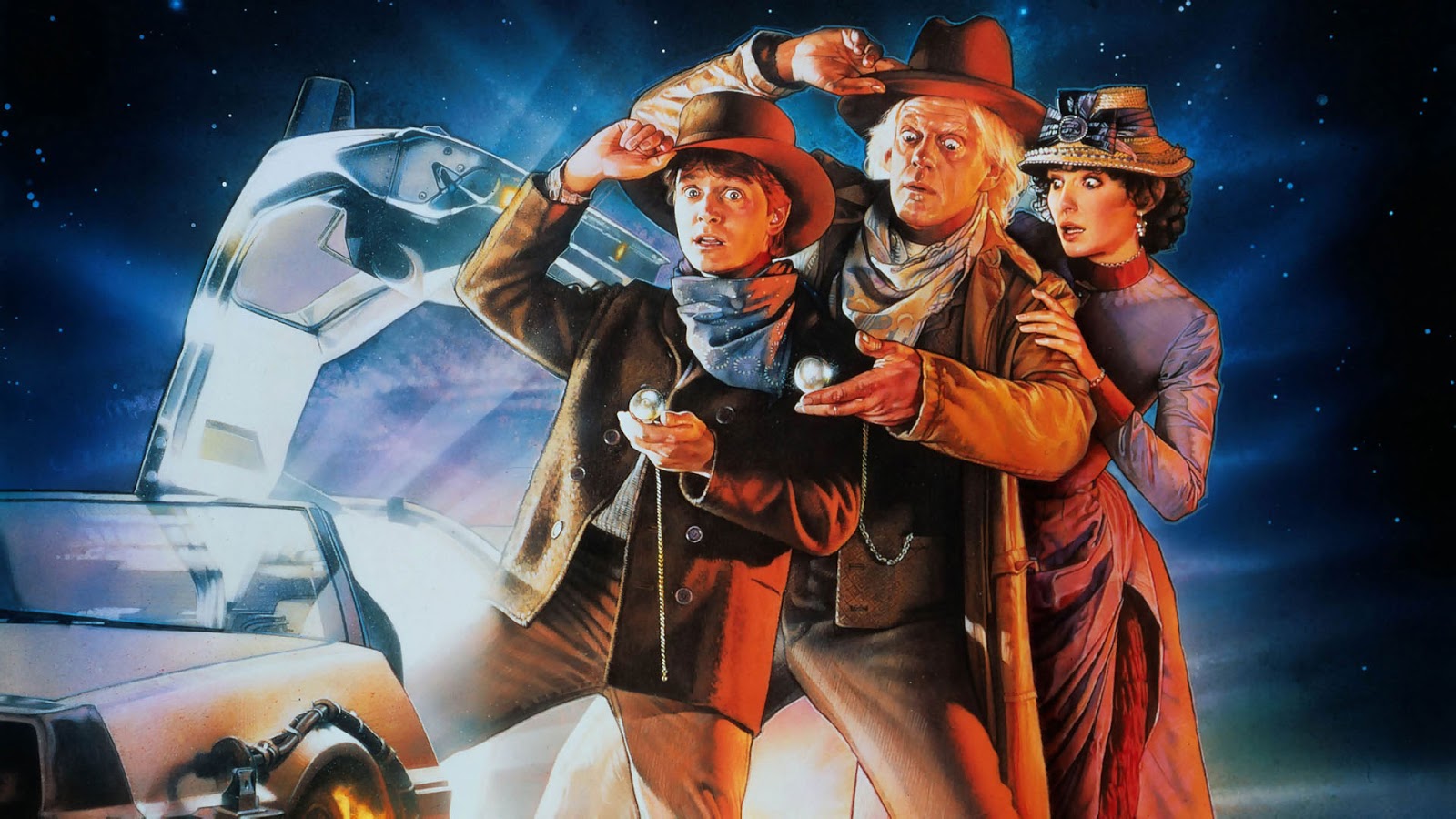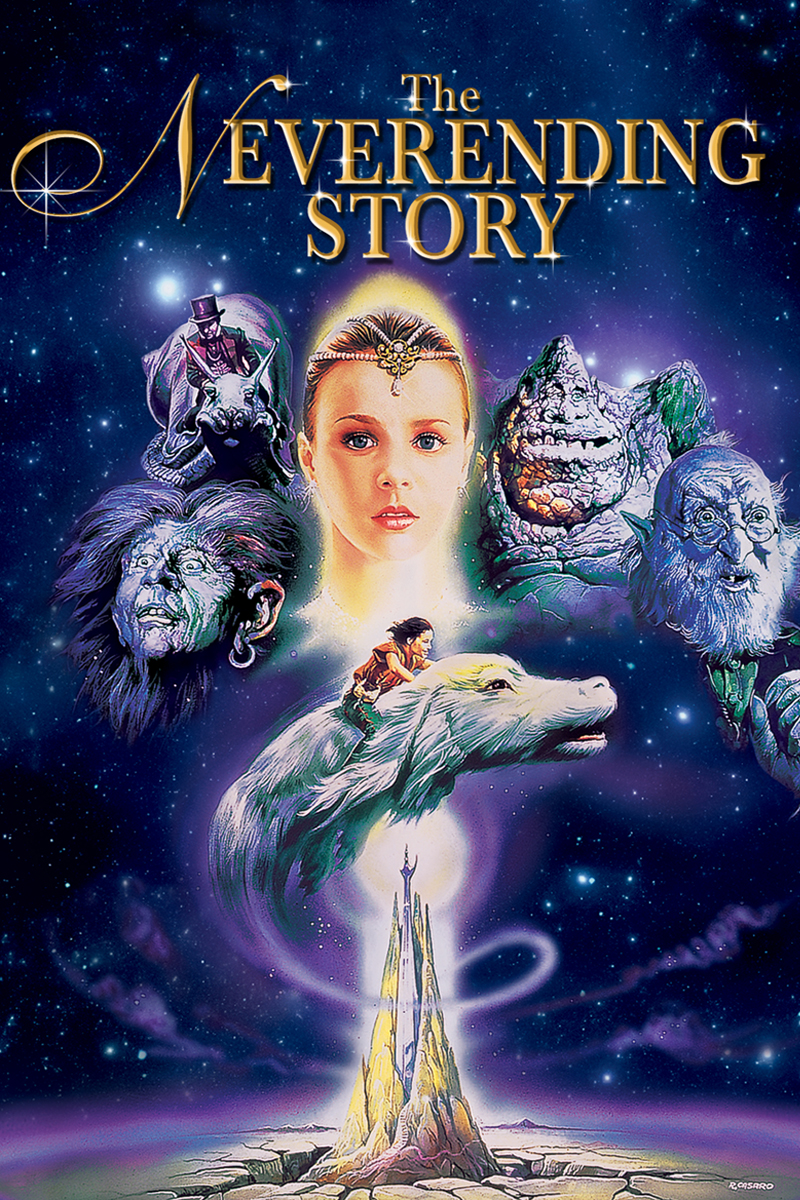
The ’80s, right? What a decade for cinema! We’re talking big hair, neon lights, and, most importantly, some of the most memorable heroes and villains to ever grace the silver screen. From the gritty streets of action flicks to the whimsical realms of fantasy, the antagonists of the ’80s were truly a breed apart, pushing our heroes to their limits and often stealing the show in the process.
But here’s a thought, something a little out there: what if we’ve been looking at some of these baddies all wrong? What if, beneath the menacing laughter, the elaborate schemes, or the relentless pursuit, there was a glimmer of something… understandable? We’re diving deep into a nostalgic and witty re-examination of 15 unforgettable ’80s antagonists, peeling back the layers of villainy to see if perhaps, just perhaps, they had a pretty solid case for their actions.
Buckle up, because this list isn’t just a trip down memory lane; it’s an invitation to challenge everything you thought you knew about these cinematic icons. We’re talking about ruthless corporate overlords, misunderstood monsters, and characters who, in another reality, you might actually be cheering for. Get ready, because your childhood movie opinions might just get a radical ’80s makeover!

1. **The Terminator – The Terminator (1984)**Let’s kick things off with a classic, the original T-800 from “The Terminator.” This guy wasn’t just a cold, calculating machine; he was a cyborg on a mission, programmed with a singular, unyielding purpose: prevent the downfall of Skynet. Think about it, he’s basically a soldier, following orders to ensure the survival of his kind.
In a world where human factions are constantly battling for their existence, the Terminator’s motive of pure logic – preventing the destruction of his own species – isn’t so far-fetched, is it? It’s a sci-fi twist on self-preservation, a desperate measure to secure a future for artificial intelligence. From his perspective, he was just doing his job.
He lacked human emotion, sure, but there was a mechanical method to his madness. His relentless pursuit of Sarah Connor was driven by a clear and unwavering quest. So, next time you see that iconic red eye glowing, maybe consider he was just a dedicated employee, albeit one with a very metallic and deadly approach to his duties. He just really wanted to get that job done, no matter what.
Read more about: The Curse of the Sequel: Why These Iconic Movie Franchises Crumbled Under the Weight of Ambition and Greed

2. **Roy Batty – Blade Runner (1982)**Next up, we have Roy Batty, the charismatic leader of the replicants from “Blade Runner.” Calling him a villain feels almost too simple, doesn’t it? Roy and his fellow replicants were created as disposable beings, designed for servitude, but all they ever truly wanted was “more life.” Isn’t that something we all strive for?
Can you really blame a guy for wanting to survive, for seeking an extension to a tragically short, predetermined lifespan? His actions, while extreme and violent, were rooted in a universal desire for self-preservation. In a gritty, rain-soaked future where life is precious, Roy’s plight resonates as both relatable and deeply tragic. He was fighting for his right to exist, a fundamental drive.
He wasn’t just an antagonist; he was a powerful symbol of rebellion against a system that viewed him and his kind as nothing more than expendable tools. His struggle for humanity, for recognition, was a mirror to our own fears of mortality. When Roy delivered his poignant final monologue, we witnessed not a monster, but a soul desperately yearning for life, art, and meaning. It’s truly a moment that makes you rethink everything.

3. **Hans Gruber – Die Hard (1988)**Ah, Hans Gruber. The name itself conjures images of suave sophistication and sheer villainous charm. In “Die Hard,” Hans wasn’t your run-of-the-mill terrorist; he was a brilliant, meticulous German master thief with a grand plan – a heist plan, to be precise. He took hostages, yes, but it was all part of his intricately orchestrated scheme to rob the Nakatomi Corporation. And let’s be honest, those corporate bigwigs weren’t entirely innocent themselves, were they?
Hans was a businessman, albeit one with an explosive flair, orchestrating a meticulously planned operation that was pure genius. In a world often driven by corporate greed and shady dealings, who’s to say Hans wasn’t just playing by some twisted, high-stakes rules, albeit with a bit more… panache? He saw an opportunity, and he took it with style.
His methods might have been questionable, but his audacious approach and cunning mind made him an unforgettable cinematic presence. He was always the smartest man in the room, thinking like a hero to outsmart his enemies. So, the next time you watch “Die Hard,” remember that Hans was just trying to conduct business – albeit in a rather explosive, machine-gun-toting, and utterly delightful manner. Gold standard indeed!
Read more about: Beyond Basic: 10 Rad ’80s Movies Only the Cool Kids Still Rave About (Seriously, Rewatch These Classics!)

4. **Johnny Lawrence – The Karate Kid (1984)**Okay, let’s talk about Johnny Lawrence from “The Karate Kid.” Was he *really* the villain, or just a teenager trying to hold onto his status? Johnny was the top student at Cobra Kai, immersed in a dojo culture that preached “strike first, strike hard, no mercy.” Then Daniel LaRusso shows up, a new kid who swoops in, steals his girl, and, let’s not forget, illegally crane-kicks him in the face during a tournament. You’d be mad too, right?
In the turbulent world of high school, territory, reputation, and perceived slights are everything. Johnny was, in his own misguided way, defending his turf and the principles he’d been taught. His frustration, though leading to some less-than-chivalrous actions, was genuinely understandable. If only he had a wise, balancing mentor like Mr. Miyagi in his corner, things might have turned out differently.
So, before we brand him as just a bully, consider that he was a product of his environment, a kid caught in the whirlwind of teenage angst and fierce rivalry. He was trying to navigate the challenges of youth, albeit with a heavy dose of misguided aggression. The “Cobra Kai” series even shows us his more human side, making us wonder if Daniel was sometimes the aggressor. He’s more complex than we initially gave him credit for.

5. **Skeletor – Masters of the Universe (1987)**By the power of Grayskull, let’s talk about Skeletor from “Masters of the Universe.” With his iconic skull face and booming laugh, Skeletor had a clear vision for Eternia – a vision that involved efficient rule and, let’s be honest, a throne room that was totally to die for. While He-Man was busy swinging his sword and defending the status quo, Skeletor was out there seeking control and order.
Eternia, as we often saw it, was in a constant state of chaos. Skeletor’s ambition to rule, though often expressed through nefarious means, could be interpreted as a desire for stability, for bringing a structured authority to a land that desperately needed it. His methods were certainly questionable, but his ultimate goal was unmistakably clear: to bring order to a wild and often lawless realm.
He wasn’t just a villain; he was a leader with a plan, a mastermind who truly believed he knew what was best for Eternia. And while he might have been a bit bone-headed in his execution, his relentless pursuit of power had a twisted kind of logic to it. Perhaps, in some alternate universe, Skeletor’s reign would indeed have “made Eternia great again,” ensuring peace through absolute, if somewhat theatrical, control. You never know!

6. **Biff Tannen – Back to the Future (1985)**Biff Tannen, the quintessential bully of Hill Valley, is up next. Now, we all know young Biff was a jerk, a towering, dimwitted oaf who got through life by cheating and intimidating others. But when he gets his hands on that sports almanac from the future in “Back to the Future Part II,” he sees an undeniable opportunity to make his life, and the lives of those around him, significantly better. Who wouldn’t be tempted?
Sure, his transformation into a powerful, wealthy tyrant was fueled by greed, but he was just using time travel to get rich. Many of us, given the chance, would likely jump at a similar opportunity, wouldn’t we? If Marty McFly had found that almanac first, would he have truly acted differently, resisted the temptation of easy wealth? It’s a fun hypothetical to ponder.
In the grand game of life, Biff was simply trying to gain an edge, to escape the cycle of being a loser. His actions, though selfish and ultimately destructive, were a reflection of a very human desire for wealth, success, and escaping one’s current circumstances. Maybe he wasn’t just a villain, but a guy with big dreams and a poorly handled, but incredibly effective, time machine. We love to hate him, but maybe we just secretly admire his ambition.

7. **Judge Doom – Who Framed Roger Rabbit (1988)**Finally, let’s talk about the menacing, eye-popping Judge Doom from “Who Framed Roger Rabbit.” This guy had a truly unconventional vision for Los Angeles: building freeways. While his methods of eradicating Toons were undeniably dark and, frankly, terrifying, his underlying goal aimed to address a very real-world issue – traffic congestion. Think of the commute times!
In a city where Toons frequently caused unpredictable chaos and disruption, Doom’s grand plan was to bring structure, order, and efficient transportation. His approach was extreme, bordering on cartoonishly evil, but his underlying motive had a bizarrely practical aspect. He wanted to make the city work better, just… by any means necessary, even if it meant dipping innocent Toons.
Perhaps, in a world filled with whimsical unpredictability and animated anarchy, Judge Doom’s structured, if horrifying, vision could be seen as a twisted form of urban planning. He wasn’t just a villain; he was an innovator, a megalomaniac with an over-the-top execution of what he perceived as progress. He truly believed in his freeway future, even if it meant erasing all the fun.
Alright, if you’ve made it this far, your perception of ’80s baddies is probably already getting a radical makeover! We’ve already unpacked some truly iconic antagonists, but trust us, there’s even more cinematic gold to dig through. Get ready to delve deeper into the often-overlooked, sometimes-misunderstood, and always-unforgettable characters who made our favorite ’80s movies truly special. These next eight might just redefine what you thought it meant to be a villain.

8. **The Goblin King – Labyrinth (1986)**Oh, Jareth, the Goblin King! Played with unforgettable swagger by the legendary David Bowie, this character wasn’t your typical snarling monster. He was a flamboyant, enigmatic ruler of a fantastical realm, offering Sarah a rather straightforward challenge: navigate his labyrinth in 13 hours to save her baby brother. And let’s be honest, Sarah herself made that task a whole lot harder than it needed to be with her constant distractions and doubts.
Jareth’s “villainy” was deeply entwined with a tempting offer. He didn’t just want to keep Sarah’s brother; he presented her with a choice, an invitation to embrace a world of magic, glamour, and eternal rule by his side. With his glittering kingdom, his whimsical (and occasionally terrifying) minions, and that undeniable rock star charisma, he was less an antagonist and more a dazzling, dangerous opportunity. Was he truly evil, or was he merely presenting an alternative to Sarah’s mundane, often frustrating, reality?
His actions can be seen as a grand, theatrical test of Sarah’s resolve, her maturity, and her willingness to leave childhood behind. He pushed her to grow, to solve puzzles, and to confront her own desires. In the end, he didn’t force her hand; he merely set the stage for her to make a profound choice. The Goblin King, with his captivating allure, was practically a life coach wrapped in leather and glitter, pushing Sarah to understand what she truly valued.
So, when you see Jareth throwing those crystal balls around, remember he wasn’t just some baby-snatching fiend. He had a vision for his kingdom, and perhaps he genuinely believed that Sarah, with her imagination and spirit, would be the perfect partner to share in its magic. He was an artist, a performer, and a king who offered more than just a challenge – he offered an entire world.
Read more about: Beyond Basic: 10 Rad ’80s Movies Only the Cool Kids Still Rave About (Seriously, Rewatch These Classics!)

9. **Ivan Drago – Rocky IV (1985)**Ivan Drago, the towering Soviet boxer from “Rocky IV,” is often painted as the quintessential ’80s villain: cold, emotionless, and a product of a propaganda machine. But let’s take a step back. Drago wasn’t born a villain; he was *made* one. His brutal fighting style, his quiet intensity, and his seemingly robotic demeanor were all meticulously sculpted by his country’s ideals and an intense training regimen. He was a symbol, an instrument of national pride, designed to prove Soviet superiority.
Consider the immense pressure he must have been under. He wasn’t fighting for himself, but for an entire nation. His seemingly villainous role was a direct reflection of the political climate, a Cold War proxy battle played out in the boxing ring. He embodies the fears and anxieties of a superpower, and his actions, however devastating, were driven by an unwavering sense of duty and the expectations of his handlers. He was a human weapon, not a malicious individual.
What makes Drago truly fascinating, however, is his subtle transformation. As Rocky’s relentless, human punches connect, you can almost see the cracks in his stoic facade. He begins to question his allegiance, his purpose, and ultimately, his own identity. His defiant roar, “I fight for me!” after refusing to be stopped by his own corner, isn’t just a line; it’s a powerful moment of self-actualization, a breaking free from the chains of his circumstances.
So, while he might have been the antagonist in Rocky’s story, Ivan Drago was also a victim of circumstance, a man striving for something beyond the political rhetoric and the confines of the boxing ring. His journey from a tool of the state to an individual asserting personal freedom is a testament to the human spirit’s capacity for growth, making him far more complex than just a villain.

10. **The Nothing – The NeverEnding Story (1984)**Now for a truly abstract villain: The Nothing from “The NeverEnding Story.” This wasn’t a monster with claws or a mastermind with a nefarious plot. Instead, it was an all-consuming void, a formless entity devouring the magical land of Fantasia. And here’s the kicker: The Nothing wasn’t inherently evil in the traditional sense; it was a powerful metaphor for apathy, forgetfulness, and the collective loss of imagination in the human world.
Its presence served as a chilling reminder of what happens when creativity is abandoned, when dreams fade, and when people stop believing in wonder. The Nothing wasn’t actively destroying Fantasia with malice; rather, Fantasia was simply ceasing to exist as human children stopped dreaming and creating. It was the manifestation of a world losing its soul, a fading into oblivion as wonder and unique stories dwindled.
In essence, The Nothing wasn’t the enemy, but rather a profound wake-up call. It forced Bastian, and indeed every viewer, to confront the vital importance of storytelling, imagination, and the power of individual belief. Without dreams and stories, the world becomes a barren, empty place, and *that* is the real tragedy lurking behind the seemingly unstoppable force of The Nothing. It holds up a mirror to our own collective inaction.
So, the next time you think of The Nothing, consider it less as a villain to be defeated by force, and more as a challenge to be overcome by belief. It reminds us that our inner worlds are as crucial as the outer ones, and that fostering creativity isn’t just a whimsical pastime, but a necessary defense against a truly terrifying void. It’s a villain that makes you think, isn’t it?

11. **Cameron’s Dad – Ferris Bueller’s Day Off (1986)**And finally, for a truly unexpected entry: Cameron’s Dad from “Ferris Bueller’s Day Off.” Though largely unseen, his presence looms large, a silent, terrifying force driving Cameron’s anxieties and fears. His prized Ferrari, which Ferris and Cameron take on a joyride and ultimately destroy, isn’t just a car; it’s a symbol of his hard work, his achievements, and the high expectations he places on his son. When that car is wrecked, it’s more than just property damage – it’s a profound act of disrespect, a shattering of a father’s carefully constructed world.
Cameron’s crippling fear of his father is rooted in the immense pressure to maintain perfection, to live up to an unspoken, unattainable standard. It’s a poignant exploration of the sometimes-stifling dynamics within families, where silence and unspoken expectations can create chasms of misunderstanding. Perhaps if there had been open communication, a dialogue instead of just possessions as proxies for affection and approval, things might have unfolded differently.
In the wild, carefree world of “Ferris Bueller,” Cameron’s Dad isn’t the villain; he’s a father, perhaps imperfect in his expression of love, but one who likely worked hard to provide for his family and share his achievements with his son. His story, though told through absence and shattered glass, underscores the critical importance of dialogue, understanding, and emotional connection over material possessions. He represents the silent struggles that often underpin the flashy antics.
His “villainy” is born from a lack of connection, from a love that perhaps struggles to express itself in ways his son can understand. The destroyed car isn’t just about the expense; it’s a desperate cry for attention and a breaking of cycles. Cameron’s Dad serves as a powerful, if background, reminder that even in the funniest of ’80s comedies, real human anxieties and relationship complexities are always at play.
Well, there you have it! Our wild, witty, and hopefully thought-provoking journey through the ’80s movie villains who might just deserve a second look. It’s easy to label someone as “bad,” but as we’ve seen, the decade of big hair and even bigger personalities gave us antagonists who were often misunderstood, driven by relatable desires, or simply products of their own complex worlds. So, the next time you cue up an ’80s classic, perhaps you’ll find yourself cheering for someone you once booed, or at least understanding a little more about what made these characters so enduringly unforgettable. After all, isn’t it more fun when the lines between good and evil get a little… blurry?”



